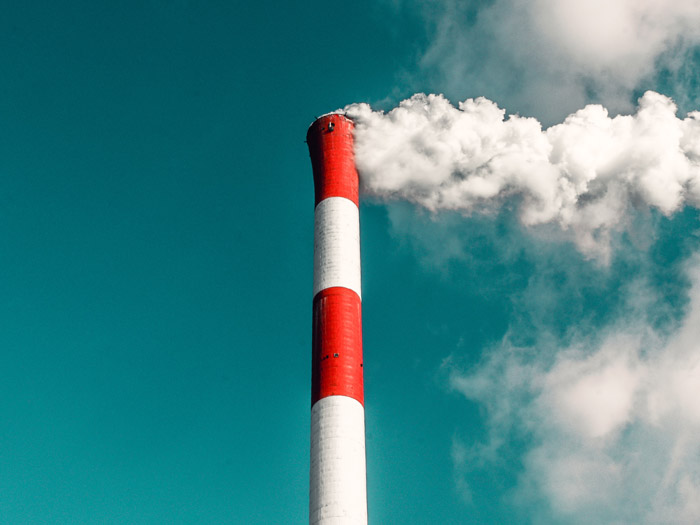
Global Renewables Outlook: The gap between rhetoric and reality is widening
The production and combustion of fossil fuels continue to emit a variety of air pollutants that can be harmful to both the environment and public health. Yet, concerns around the impact of fossil fuels have taken a back seat as Covid-19 continues to inflict far-reaching health, economic and social consequences. The Covid-19-enforced global slowdown has provided momentary relief for the environment. Pollution and greenhouse gas emissions have fallen dramatically, providing a beacon of hope for tackling climate change.
A report on the impact of Covid-19 on global energy demand and carbon dioxide (CO2) emissions, released by the International Energy Agency (IEA) in April 2020, projects the world’s CO2 emissions will fall by 8% this year — to levels last seen a decade ago. This is the largest ever recorded year-on-year reduction, six times greater than the 2009 declines attributed to the Global Financial Crisis (GFC). IEA’s estimates are based on assumptions around lockdown timings, school and business closures, curfews, with these restrictions gradually easing over the coming months.
 Hopefully, the cleaner air we are enjoying provides a sneak peek into a future of lower pollution, reduced health care costs, and more sustainable practices. There are fears a rebound in emissions will exceed the declines, restoring the long-term trend. In 2010, following the GFC, CO2 emissions recorded the highest year-on-year increase on record.
Hopefully, the cleaner air we are enjoying provides a sneak peek into a future of lower pollution, reduced health care costs, and more sustainable practices. There are fears a rebound in emissions will exceed the declines, restoring the long-term trend. In 2010, following the GFC, CO2 emissions recorded the highest year-on-year increase on record.
In the report, IEA emphasised the significance of directing stimulus and recovery investment into an energy infrastructure that aligns with medium- and long-term priorities to accelerate the shift to a sustainable decarbonised economy.
The inaugural Global Renewables Outlook was released by the International Renewable Energy Agency (IRENA) in April 2020. The Outlook reviews the ongoing global energy transformation and outlines a vision for transformative energy policies — including a pathway to cut CO2 emissions to net-zero and potentially zero beyond 2050. IRENA is an intergovernmental organisation that serves as the principal platform for international cooperation on renewable energy based in Abu Dhabi, UAE.
Notwithstanding a fleeting drop in emissions, The Outlook highlights a widening gap between rhetoric and reality in tackling climate change. Over the past decade, global energy-related CO2 emissions have risen by 1% annually and the negative impacts of climate change are becoming more pronounced. While some countries are pursuing net-zero emissions, others lack the necessary policy targets to initiate meaningful change.
There are some positives. The Outlook confirms renewable power generation growth exceeded overall power demand in 2019, signalling declines in fossil fuel-based generation. Solar PV and wind are dominating the global market for new power generation capacity. IRENA’s research also points to early signs of a disruptive acceleration in the electrification of transport. Though, the agency advises that energy-intensive sectors, such as building and industry, are too slow to adopt renewable technology.
Renewables, efficiency, and electrification provide a clear focus for action, says IRENA. However, there is a need for regions and countries to raise their level of ambition. Nationally Determined Contributions (NDC) within the Paris Agreement framework only deliver 40% of renewable electricity deployment needed by 2030. Will Covid-19 raise ambition and encourage us to accelerate the decarbonisation of our societies? Or will further inaction widen the gap?
IRENA’s Global Renewables Outlook presents several possible pathways to decarbonisation, all with different outcomes, and encourages us to pick the right path to secure our energy future. An “ambitious yet technically and economically feasible pathway” to create a sustainable energy future is provided. “I hope sincerely that this new publication helps to show the way,” says Francesco La Camera, director-general of IRENA.
A “Planned Energy Scenario (PES)” is based on governments’ current energy plans and policies as of 2019, including NDCs under the Paris Agreement. IRENA’s “Transforming Energy Scenario (TES)” offers a climate-safe pathway based largely on renewable energy sources and steadily improving energy efficiency. TES will maintain global temperatures “well below” 2 degree Celsius (°C) in line with the Paris Agreement. A Deeper Decarbonisation perspective (DDP) goes even further, offering possibilities for accelerated action that will reduce energy and process-related CO2 emissions to zero in 2050-2060.
Unfortunately, current energy plans and policies are not going to cut it. The Outlook suggests PES will lead to a global temperature rise of 2.5% in the second half of the century. Energy-related CO2 emissions reach 35 Gigatonnes (Gt) by 2030, dropping only slightly to 33 Gt by mid-century, roughly today’s level. Primary energy demand increases to 710 exajoules (EJ) in 2050, with fossil fuel volumes remaining similar to today at 440 EJ. The report notes a decline in coal production of 28% from 2016 levels. Gas (+53%) and oil (+2%) both continue to rise under PES.
Conversely, TES represents dramatic declines in fossil fuel use, dropping by 75% in 2050, to 130 EJ. Coal declines reach 87% and oil is down 70%. Natural gas is projected to increase by 3% to 2030, followed by a sharp decline to 2050 (-41%). The share of renewables and efficiencies underpin a markedly different scenario and account for 90% of energy-related emissions reductions. Renewables’ share reaches 66% by 2050. Overall, primarily energy demand falls to 538 EJ in 2050 and energy-related emissions are projected at 9.5 Gt. To achieve TES an average annual drop in CO2 emissions of 3.8% is necessary until 2050.

Even if we choose this ambitious pathway, IRENA submits that energy-intensive industries, shipping and aviation will continue to be heavy emitters of CO2 by 2050. Removing the last third of global emissions is difficult to eliminate and costly, says IRENA. The DDP describes how to reduce the remaining emissions to zero in the 2050 to 2060 timeframe. The Outlook identifies additional renewable energy, direct electrification and “green hydrogen” as key enablers of these additional reductions.
TES requires significant investment, USD110 trillion by 2050 or 2% of GDP throughout the forecast period, 80% of which needs to be investment in “renewables, energy efficiency, end-use electrification, and power grids and flexibility.” An annual investment of USD3.2 trillion is significantly higher than historical levels of USD1.8 trillion per year that occurred between 2014-2018. Though, The Outlook suggests even PES requires USD2.9 trillion per year of contributions to the global energy system. DDP needs an additional USD20 trillion investment in addition to TES.
While this financing may seem heavy, the report highlights a potential payback of between USD3 and USD8 for every USD1 spent in TES, through reduced environmental and health externalities. The report also emphasises greater job growth — seven million more jobs economy-wide compared to current plans — cleaner living conditions,higher economic growth, and significantly improved welfare. Incremental GDP growth of 2.4% by mid-century equates to an additional USD98 trillion — outrunning the investments required to transform our energy system. The transformation pays for itself, says IRENA.
80% of solar PV and wind projects to be commissioned in 2020 will produce electricity cheaper than any fossil fuel alternative, says IRENA. An accelerated decline in costs sees electricity become the central energy carrier by 2050 in TES reaching 50% share of final consumption, up from 20% today. TES estimates EV volumes will increase from 8 million in 2019 to more than 1,100 million. The scenario also calls for a ten-fold increase in heat pumps installed by 2050.
Synergies between renewable energy sources will play a vital role in our energy future. Cost-effectiveness of hydropower will counteract seasonality and short-term variability of wind and solar generation. The Outlook identifies the significant scale-up potential of hydropower, bioenergy, solar thermal and geothermal renewable energy. Bioenergy will play an important role in sectors where it is difficult to electrify, achieving 23% share of primary energy in TES, up from 10% in PES. IRENA also recognises the importance of green hydrogen, produced by renewable electricity through electrolysis, indicating it will become cost-competitive with “blue” hydrogen in the next few years in certain locations.








